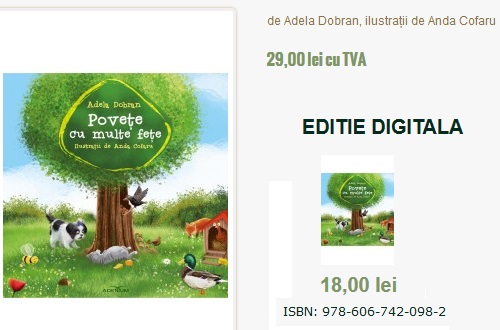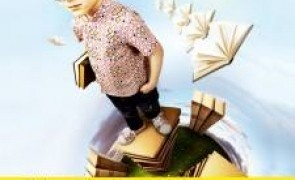A Little Frog’s Heart – Synopsis of the First For
Volumes
Volume I – The Golden Quill, Angel or Executioner?
Since you’ve
already read this volume, you are familiar with the story line. Just to briefly
remind you: Mother Drop, the Flea and the Silk Worm are brought together by a
series of circumstances and their encounter prompts a whole string of stories.
Their tales let us know about their identity and nature, about the environments
they come from, about the events that made them leave the safety of their homes
and set out on a quest.
Volume II – The First Steps towards Maturity
This is another
volume that you’ve already gone through and, as you know, the focus is on the
Old Rat and its funeral incineration. As a parallel story, we have the Flea
recounting its adventures from the time when he accidentally got stuck in a
tom-cat’s eye and had to go through a legal battle in order to re-gain his
freedom.
In terms of genre,
the episode of the Old Rat funeral is a drama, whilst the Flea’s story
obviously falls under adventures.
Volume III – The Stellar Waltz of Life
Philosophical
meditation is the phrase that best describes the overall tone of the volume.
There is also an element of continuity that links the current volume with the
previous one: the Fox Priest is a character who comes to the forefront of the
story, and his presence brings about the topic of greed and keeping up false
appearances.
The Flea gets into
the pockets of the priest looking for candy, like any mischivious child would,
but instead he finds himself in a big pile of gold coins. Thus, the Flea enters
a parallel world, completely different from his ordinary world, with rules and
hidden traps which he comes across and gets to know by accident.
The title stems
more or less from the themes like friendship, loyalty, trust, the clash between
wants and needs. The dialogue is carried out mainly between the Flea and the
Silk Worm. The latter is hopelessly in love with a girl, but he doen’t know how
to go about it. The Flea listens to him and, being slightly older and more
experienced, he gives the Silk Worm good advice. Thus, topics like trust and
patience are extensively debated and the conclusion is self-explanatory: any
relationship (whether it’s camaraderie, or romantic love) can’t survive without
them.
Topics like
disappointment and failure in life are craftily and courageously tackled, and
humour is an integral part of the dialogue. Conclusion, again: every kick in
the back is a step forward!
The chapter which
gives the title of the volume is a lesson on how life should be perceived and
handled. This is a subject taught by the best teachers going – Mother Nature’s
children: the sun, the wind and the rain. What the Flea reveals to his friend
is that life has a purpose and a pace, and if we manage to adjust ourselves to
its rhythms, we can live happily and content ever after. Going with the flow,
rather than fighting against it seems to be the key to success.
Another important
aspect depicted in the volume is the special relationship between grandparents
and grandchildren. Whilst still in the priest’s pocket and actively looking for
a way out, the Flea goes down the memory lane and remembers stories and
anecdotes, as well as life events that have his grandparents as main
participants. The grandparents’ teachings are far from moralising; funny,
loving and caring would be more like the right descriptors for them. All these
memories are poved right once again, as the Flea finally gets home and his
grandparents are overjoyed to have him back: they give him a great welcome,
clean him and nurse him back to health. Grandma’s practical intelligence and
granddad’s patience and wisdom play a great role in educating the grandchildren
and preparing them for life.
When the
grandparents’ time in this world comes close to an end, we’ve got a very
emotive and skilfully written episode where serious topics like old-age and
death are described metaphorically, as if seen through a child’s eyes. Death is
regarded as a serene and calm departure which provides the right type of
closure for all the members of the family. In my personal opinion, this episode
could become a little film in itself.
The Joys of the Sun – the
last chapter of the book, puts forward a story about the birth of the universe,
with a special focus on planet Earth. The Sun falls deeply in love with a
galaxy; their love, secret and forbidden, triggers a cascade of romantic
adventures in which the two lovers are involved. In the end, they have to
resign themselves to being torn apart, since they each must perform their duty
to the Universe where they are needed, which is worlds away from each other.
The conclusion, however, is a positive one: despite incommensurable distance in
time and space, their love is still there, as passionate as ever, and making
the world go round. That is, probably another potential bit of material which
can be turned into a little film.
Volume IV - The Coming of Age
The Flea and the
Silk Worm are still the two main poles of dialogue, with Mother Drop as a
passive witness, since she had fallen asleep way back, at the beginning of
volume III. The third and the forth volumes are locked in together by a common
theme which carries on from the previous to the next: grandparents and their
role within the family. Pushed by his curiosity, the Silk Worm asks the Flea a
lot of questions about his grandparents, which again, bring about the theme of
romantic love. We have the opportunity to be introduced to grandma and granddad
as young people.
As a young girl,
word of Grandma beauty had travelled far and wide in the land. Thus, she was
not short of male attention. Out of all the men, two are considered as
potential candidates for marriage: a wealthy young man, well-versed in the high-life,
with good taste in women, and a poor young man, honest, hard-working and
determined to touch the heart of the girl of his dreams. The rich young man
shows up to propose holding a posh and colourful bunch of exotic flowers, while
the poor one presents his amour with a bunch of freshly picked snow-drops, the
first in the season. The well-to-do comes smartly dressed in a perfectly
fitting suit, while his poor rival makes an appearance in his best clothes, yet
covered in mud from head to toe. Despite appearances, the girl understands that
her poor suitor had gone to great length to get those snow-drops, tearing his
best clothes and getting all dirty, while the young dandy employed other people
to get done “the dirty work”. The young bride-to-be decides to pick up her
future husband considering the quality of the person, and therefore she chooses
the less wealthy on the outside, with plenty to give on the inside. It’s a
classical romantic story that goes back in time to show how grandma and
granddad came to find each other and get married.
Grandma is also
the source of another charming story about some dew-drops. On this occasion, we
have the old clash between generations and the on-going conflict between young
and old. The Flea remembers his grandma recounting the dialogue between an old
dew-drop, who stands for duty, honour and self-sacrifice, and its young
counterpart, a rebellious and boisterous dew-drop, eager to get to know the
world around and to set out on its own adventure.
The Flea is not
short of adventure in this book, either. One day he decides to go on a stroll
through the fur of his master, the Old Rat and happens to come across an old wound
which has never healed properly. Inquisitive as we know him, he wants to take a
closer look at things, and therefore he gets under the rat’s skin to see what
is really going on. No sooner underground, then the Flea finds himself in a
middle of a conflict between the red cells and thewhite cells, separated in two
different crowds, each lot blaming the other for the poor state of the old
wound. In the end, the Flea succeeds in appeasing both sides by cleaning the
wound and putting things back on track for the healing process.
The Flea continues
to spin his stories with the Silk Worm enjoying every single one of them. The
following part of the book, the coming of age, which also gives the title of
the volume, is quite an extensive bit. The flea belongs to a big family with
lots of siblings and the sibling rivalry coming with the territory. The older
brother often challenges the younger ones to do all sorts of daring and crazy
things (some of which are downright dangerous!). As a result, the younger
brothers come together in spontaneous unity against the older brother who never
stops teasing them. On one of these occasions everything ends up in tears, as
one of the littlies gets badly hurt. Faced with the consequences of their acts,
both the young brother, and particularly the older brother have to acknowledge
reality and assume responsibility.
Remorseful and
upset, the older brother decides to leave home and seclude himself in the ear
of the Old Rat without telling anything to anyone. Worried about his sudden
disappearance and his future well-being, the family makes the decision of sending
dad in search for the older son, while the rest of the family are working
together to alleviate the suffering of the injured child and to help him get
better soon.
Taking shelter in
the Rat’s ear, the older brother realises that he can’t hide away from the
outside world, but there is no hiding from his inner dragons. He is brought to
account for his careless attitude by his conscience until he recognises his
guilt in it and makes a pledge to change the person he is. On the other hand,
the older brother benefits from the sound advice and the good hosting of the
Rat.
In order to pay
his dues for the warm welcome and the good counsel, the older brother rolls up
his sleeves and starts cleaning and tidying up in the Rat’s ear. As he works
away, he becomes the unsuspecting hero of a great adventure which will play a
major role in his maturing process. The events of the present hook him up to
some events in the past, and he starts remembering the bumpy ride he had when,
together with a friend, went honey-hunting in a beehive.
As they dive into
the beehive, they realise that the place is built like a fortress, with armies
of bee-workers guarding the honey day in and day out. The episode is highly
humorous and fine in details. The two fleas are happy to get out with their
lives, but much to their surprise they find that the bee queen filled their
sacks with lots of honey jars, explaining everything in a note. The episode
comes to show that life has many shades of grey between the definite black and
white. What we think is bad, can turn out good and the other way around!
The forth volume
closes with a little pensive chapter – Philosophy is in Everything – which
rounds up the book.
to be continue



 - Am scris acest ghid împreună cu soția mea (colegă de catedră), Simona Iancu, pentru a veni în întâmpinarea dorințelor elevilor de a avea o culegere de lecții și teste eficiente, centrate pe cerințele programei pentru examenul de bacalaureat. Am realizat această carte în modul în care ne-am fi dorit să o fi făcut alți autori, atunci când eram profesori debutanți și am fi avut nevoie de așa ceva. Acest ghid propune o serie de aspecte teoretice, bine dozate, după care vine și evaluează cu itemi diverși, formulați similar celor din cadrul probei de la examenul de bacalaureat Suporturile cartografice (hărțile ”mute”) au un rol foarte important în învățarea noțiunilor geografice, deoarece stimulează memoria vizuală, foarte eficace în acest proces cognitiv.
- Am scris acest ghid împreună cu soția mea (colegă de catedră), Simona Iancu, pentru a veni în întâmpinarea dorințelor elevilor de a avea o culegere de lecții și teste eficiente, centrate pe cerințele programei pentru examenul de bacalaureat. Am realizat această carte în modul în care ne-am fi dorit să o fi făcut alți autori, atunci când eram profesori debutanți și am fi avut nevoie de așa ceva. Acest ghid propune o serie de aspecte teoretice, bine dozate, după care vine și evaluează cu itemi diverși, formulați similar celor din cadrul probei de la examenul de bacalaureat Suporturile cartografice (hărțile ”mute”) au un rol foarte important în învățarea noțiunilor geografice, deoarece stimulează memoria vizuală, foarte eficace în acest proces cognitiv.






